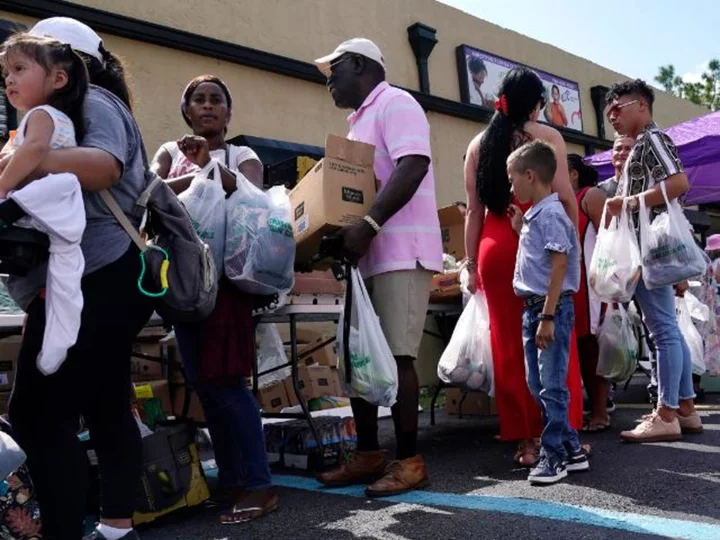Food insecurity among families with children rose significantly last year after falling markedly in 2021, according to a US Department of Agriculture report released Wednesday.
Children were food insecure at times in 3.3 million households with kids during 2022, an increase of 1 million families from the prior year, the report found.
Some 8.8% of households with children were unable at times to provide adequate, nutritious food for their kids last year, compared with 6.2% in 2021.
Overall, some 17 million households, or 12.8%, had difficulty providing food for all members at some time in 2022 because of a lack of resources. That is up from 13.5 million households, or 10.2%, the year before.
"There's just a lot of precarity in the economy still," said Diane Whitmore Schanzenbach, a social policy professor at Northwestern University. "Food is one of the few places that families kind of have the ability to cut back because you can't say, 'Let me pay half of my mortgage this month or pay half of my rent.'"
Poverty also rose last year, particularly among children, she noted.
Some 12.4% of children were in poverty in 2022, up from a record low of 5.2% the year before and roughly comparable to where it was prior to the pandemic in 2019, based on a broader alternative measure developed by the US Census Bureau.
"We know that food insecurity and poverty were both pushed down by the extraordinary Covid response," she said of the improvements in both measures in 2021.
Expiration of pandemic support
Though the USDA does not delve into the factors behind the changes in food insecurity, experts point to the loss of federal Covid-19 pandemic assistance as a major reason why food insecurity increased in 2022.
Among the supports that expired was the enhanced child tax credit. As part of the American Rescue Plan Act, tens of millions of families received half the credit as monthly payments of up to $300 per child from July through December 2021. They received the other half when they filed their 2021 tax returns.
The relief package increased the maximum credit to $3,600 for children under age 6 and $3,000 for those ages 6 through 17 for 2021. Also, it made the credit fully refundable so the lowest-income families could qualify.
Studies showed that families spent much of the money on necessities, while the US Census Bureau's Household Pulse Survey found that parents reported less trouble paying for food and household expenses after the initial installment was received.
Also, Americans received their third and final stimulus payment, worth up to $1,400, in 2021.

